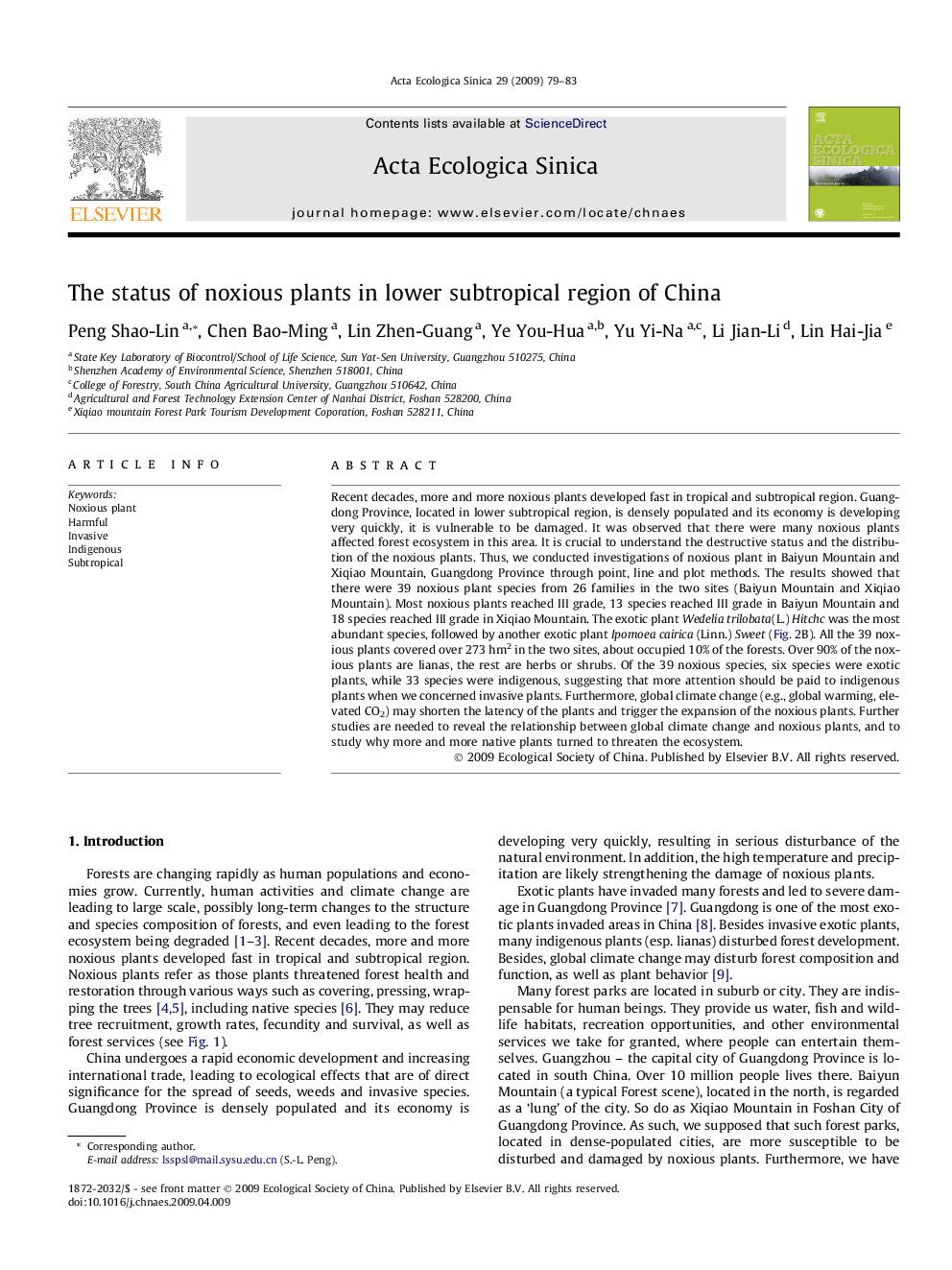| کد مقاله | کد نشریه | سال انتشار | مقاله انگلیسی | نسخه تمام متن |
|---|---|---|---|---|
| 4380243 | 1303977 | 2009 | 5 صفحه PDF | دانلود رایگان |

Recent decades, more and more noxious plants developed fast in tropical and subtropical region. Guangdong Province, located in lower subtropical region, is densely populated and its economy is developing very quickly, it is vulnerable to be damaged. It was observed that there were many noxious plants affected forest ecosystem in this area. It is crucial to understand the destructive status and the distribution of the noxious plants. Thus, we conducted investigations of noxious plant in Baiyun Mountain and Xiqiao Mountain, Guangdong Province through point, line and plot methods. The results showed that there were 39 noxious plant species from 26 families in the two sites (Baiyun Mountain and Xiqiao Mountain). Most noxious plants reached III grade, 13 species reached III grade in Baiyun Mountain and 18 species reached III grade in Xiqiao Mountain. The exotic plant Wedelia trilobata(L.) Hitchc was the most abundant species, followed by another exotic plant Ipomoea cairica (Linn.) Sweet ( Fig. 2B). All the 39 noxious plants covered over 273 hm2 in the two sites, about occupied 10% of the forests. Over 90% of the noxious plants are lianas, the rest are herbs or shrubs. Of the 39 noxious species, six species were exotic plants, while 33 species were indigenous, suggesting that more attention should be paid to indigenous plants when we concerned invasive plants. Furthermore, global climate change (e.g., global warming, elevated CO2) may shorten the latency of the plants and trigger the expansion of the noxious plants. Further studies are needed to reveal the relationship between global climate change and noxious plants, and to study why more and more native plants turned to threaten the ecosystem.
Journal: Acta Ecologica Sinica - Volume 29, Issue 1, June 2009, Pages 79–83